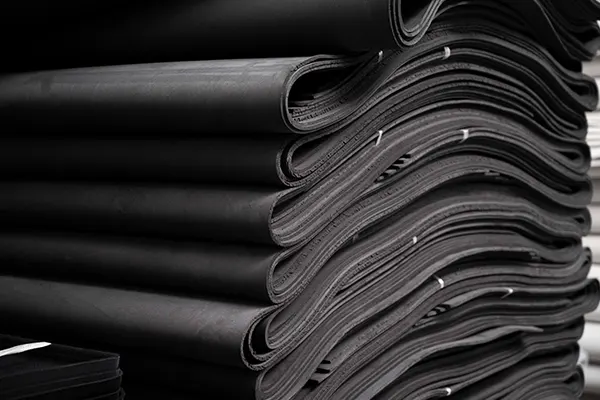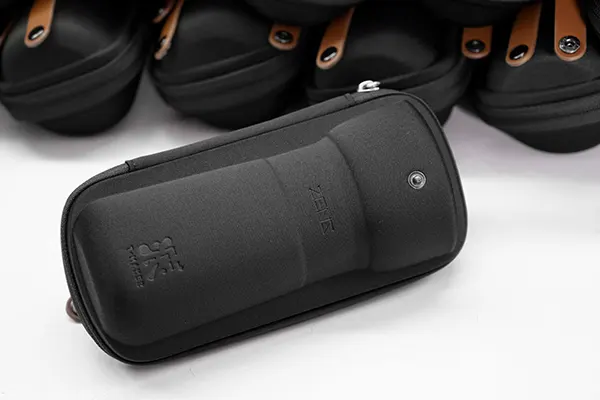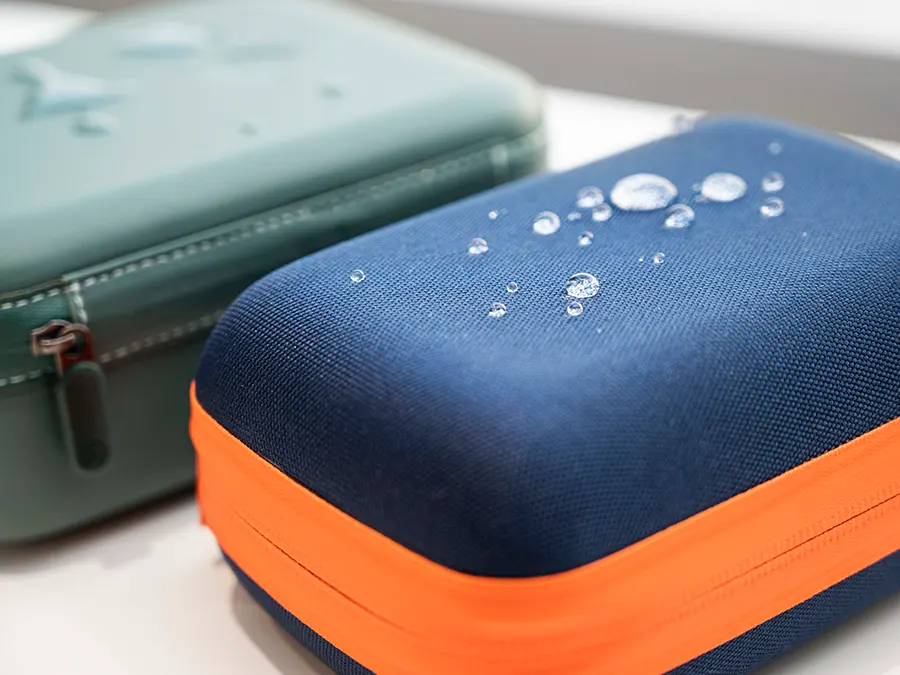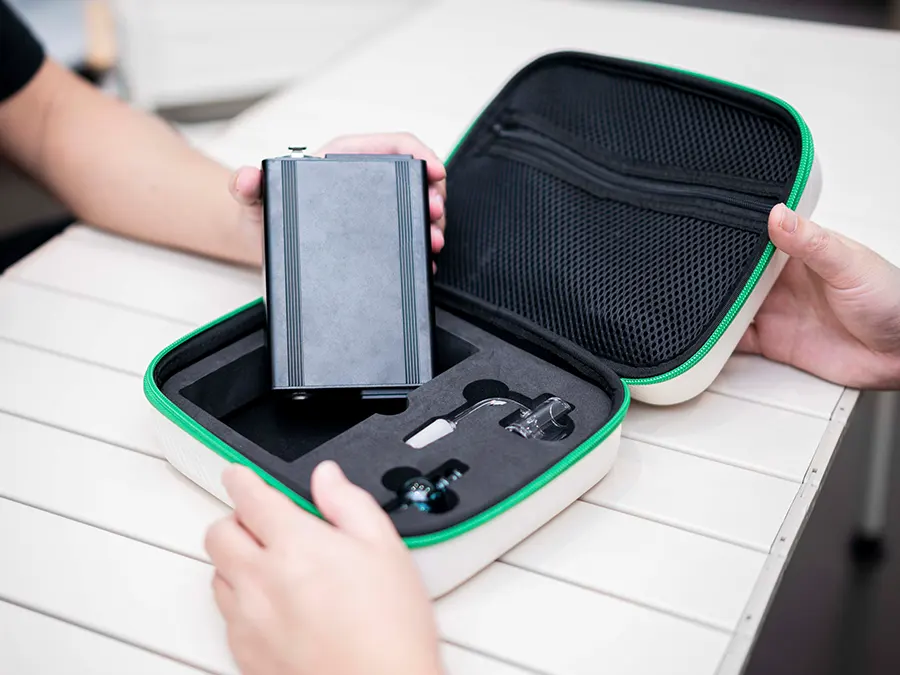In the realm of materials, EVA and PVC hold a significant position due to their versatile nature and diverse applications. While both materials have their own distinctive characteristics and advantages, understanding the key differences is crucial for making informed decisions in various industries. Bu makalede, we will delve into the composition, properties, and applications of EVA and PVC. By unraveling the mysteries behind these materials, we hope to provide you with the necessary knowledge to choose the right material for your specific needs.
What is EVA Material?

EVA, an acronym for Ethylene-vinyl acetate, is a copolymer made by the polymerization of ethylene and vinyl acetate monomers. This composition is what gives EVA its unique properties. Ethylene provides excellent toughness and flexibility, while vinyl acetate enhances adhesion and thermal stability. Moreover, the ratio of ethylene to vinyl acetate content determines the hardness and softness of the EVA material. Generally, the higher the vinyl acetate content, the softer and more flexible the EVA becomes.
What is PVC Material?

PVC, or Polyvinyl chloride, is a synthetic thermoplastic polymer composed of repeating units of vinyl chloride. The composition of PVC grants it the ability to withstand a variety of environmental conditions, making it one of the most versatile materials in the industry. Its excellent chemical resistance, mechanical properties, and durability have made PVC a staple in numerous sectors.
EVA'ya karşı. PVC: Manufacturing Process
EVA materials are manufactured through a process known as the high-pressure polymerization of ethylene and vinyl acetate monomers. This process involves the use of a catalyst to initiate the reaction, resulting in the formation of EVA copolymer chains. The final material composition is determined by carefully controlling the ratio of ethylene to vinyl acetate during the polymerization process.
On the other hand, PVC is produced through a process called suspension polymerization. In this method, vinyl chloride monomers are suspended in water, and a free radical initiator is introduced to initiate the polymerization reaction. The resulting PVC resin is then processed further to achieve the desired characteristics and properties. It is worth noting that there are alternative production techniques such as emulsion polymerization and bulk polymerization, each with its own advantages and characteristics.
EVA'ya karşı. PVC: Dayanıklılık


EVA exhibits remarkable resilience and resistance to wear and tear, making it an excellent choice for products such as eva case that undergo frequent use and demand durability. The copolymer structure of EVA provides a balance between strength and flexibility, allowing it to withstand external forces without deformation or breakage. Its inherent toughness ensures that EVA materials maintain their shape and integrity even under harsh conditions.
In comparison, PVC possesses exceptional strength and endurance, enabling it to withstand heavy loads and physical stress. PVC’s strong intermolecular forces provide excellent resistance to impact, making it suitable for applications that require structural integrity. Whether it’s pipes, cables, or roofing materials, PVC’s durability makes it a reliable choice for long-lasting solutions.
EVA'ya karşı. PVC: Flexibility and Elasticity
EVA’s inherent flexibility is one of its primary advantages. Due to the high vinyl acetate content, EVA exhibits a soft and pliable nature, allowing it to conform to various shapes and contours. This versatility makes EVA an ideal material for products that require flexibility and ease of use, such as footwear, sports equipment, and packaging materials.
Conversely, PVC’s elasticity enables it to recover its original shape after deformation. This characteristic makes PVC suitable for applications that involve bending or stretching, such as inflatable structures, hoses, and gaskets. PVC’s ability to maintain its elasticity over a wide range of temperatures expands its potential applications in diverse industries.
EVA'ya karşı. PVC: Kimyasal Direnç
EVA materials possess excellent resistance to a wide range of chemicals and solvents. This resilience makes EVA an ideal choice for products that come into contact with various substances, including cleaning agents, oils, and acids. Ek olarak, EVA’s resistance to mildew and mold growth further enhances its durability and longevity.
PVC, similar to EVA, exhibits impressive chemical resistance. It can withstand exposure to acids, alkaliler, ve diğer aşındırıcı maddeler without degradation. This quality enables the utilization of PVC in critical applications where chemical exposure is a concern, such as chemical storage containers, laboratory equipment, and pipe systems.
EVA'ya karşı. PVC: Suya Dayanıklılık

In terms of water resistance, EVA proves to be highly effective. The copolymer structure of EVA, with its closed-cell foam construction, prevents water absorption and acts as a barrier against moisture. This property makes EVA an ideal material for waterproofing applications in industries like construction, marine, and outdoor gear.
Similarly, PVC boasts exceptional waterproofing capabilities. Due to its low permeability and resistance to water absorption, PVC is an optimal choice for applications where moisture protection is crucial. From roofing membranes to rainwear, PVC’s waterproofing properties ensure the integrity and longevity of the end products.
EVA'ya karşı. PVC: UV Resistance
One of the intriguing characteristics of EVA is its resistance to UV radiation. EVA’s ability to withstand prolonged exposure to sunlight without degradation makes it an excellent choice for outdoor applications. UV resistance ensures that EVA materials maintain their physical properties and aesthetics, even when exposed to harsh sunlight for extended periods. This quality has led to the use of EVA in outdoor furniture, solar panels, and automotive components.
Similarly, PVC possesses notable UV resistance, making it suitable for applications that require prolonged exposure to sunlight. The addition of UV stabilizers during the manufacturing process enhances PVC’s resilience to UV radiation, ensuring that it retains its structural integrity and appearance over time. Applications benefiting from PVC’s UV resistance include window profiles, fencing, and outdoor signage.
EVA'ya karşı. PVC: Thermal Insulation

EVA materials exhibit remarkable thermal insulation properties, making them highly sought after in industries that require temperature control. EVA’s closed-cell structure reduces heat transfer, thus providing excellent insulation against cold and hot temperatures. This characteristic finds applications in industries such as packaging, automotive, and construction.
Alternatively, PVC possesses a moderate level of thermal insulation. While not as effective as EVA in terms of insulation, PVC still offers notable heat resistance. Its ability to maintain its mechanical properties at elevated temperatures makes PVC suitable for applications that involve heat transfer, such as electrical insulation, pipes, and cladding.
EVA'ya karşı. PVC: Maliyet
When considering the economic feasibility of using EVA materials, it’s essential to evaluate the benefits offered by the material. While EVA may have a higher initial cost compared to other materials, its excellent durability, flexibility, and resistance to chemicals and UV radiation contribute to its long-term cost-effectiveness. The longevity of products made from EVA ensures reduced maintenance and replacement costs, making it an economically viable choice for various industries.
On the other hand, PVC offers cost-effectiveness due to its low raw material and production costs. Ek olarak, PVC’s durability and long lifespan contribute to its overall cost-effectiveness. The ability to withstand extreme weather conditions and resist chemical degradation reduces maintenance costs and extends the lifespan of products made from PVC.
EVA'ya karşı. PVC: Environmental Impact

The eco-friendliness of EVA lies in its recyclability. EVA materials are readily recyclable, enabling the reuse of resources and reducing waste. Furthermore, some manufacturers have begun producing EVA using renewable resources, further minimizing the environmental impact. The recyclability and sustainable production methods associated with EVA make it an environmentally conscious choice.
PVC’s environmental considerations revolve around its manufacturing process, potential toxicity, and recycling capabilities. While PVC production generates chlorine gas, steps are taken to minimize its release into the environment. Ek olarak, advancements have been made in developing alternative recycling techniques for PVC, allowing for a more sustainable use of the material. Assessing the environmental impact of PVC involves considering the full life cycle of the material, including its durability and recyclability.
EVA'ya karşı. PVC: Applications and Industries
EVA materials find application in various industries, including footwear manufacturing, sporting goods, automotive, ambalajlama, and even healthcare. The flexibility, durability, and resistance to chemicals and UV radiation make EVA a versatile material that can be tailored to specific needs. Its use in shoe soles, eva foam pads, protective case and medical equipment showcases its adaptability across diverse sectors.
PVC’s applications span a broad range of industries, covering construction, electrical, automotive, and healthcare. The material’s durability, chemical resistance, and cost-effectiveness contribute to its extensive use. PVC finds its way into window frames, pipes, cables, blood bags, and many other products that require a combination of resilience and affordability.
EVA'ya karşı. PVC Materials, Hangisi Daha İyi?
When it comes to selecting the right material for a particular application, the choice between EVA (Ethylene Vinyl Acetate) and PVC (Polyvinyl Chloride) often arises. Both materials possess unique properties, making them suitable for various industries and purposes.
EVA Material Benefits:
- Flexibility and elasticity
- Durability and resilience
- Chemical resistance
- Water resistance and waterproofing
- UV resistance
- Thermal insulation
- Recyclability and environmental friendliness
PVC Material Benefits:
- Strength and endurance
- Chemical resistance
- Water resistance and waterproofing
- UV resistance
- Reasonable heat resistance
- Cost-effectiveness
- Recyclability and sustainability
For projects that prioritize flexibility, ease of use, and recyclability, EVA may be the preferred choice. On the other hand, when durability, strength, and cost-effectiveness are major considerations, PVC may be the better option. It is essential to carefully assess the unique properties and limitations of each material and consider how they align with the intended use to determine which material is the most suitable.
Conclusion
Sonuç olarak, understanding the key differences between EVA and PVC materials is essential for making informed decisions in various industries. While EVA exhibits remarkable flexibility, UV resistance, and recyclability, PVC boasts excellent durability, chemical resistance, and cost-effectiveness. By evaluating the specific requirements of each application, one can choose the most suitable material to achieve desired outcomes. Whether it’s EVA’s versatility or PVC’s reliability, the choice ultimately depends on finding the right balance between functionality, longevity, and economic feasibility.

















